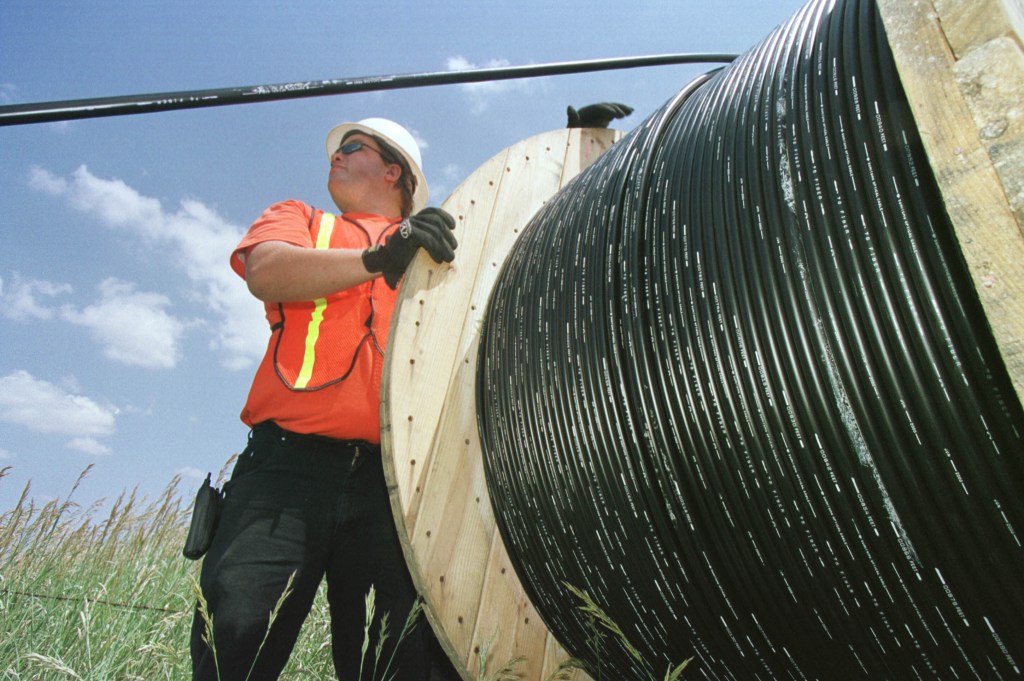In an effort to provide another internet option for underserved areas of the country, one start up is proposing we move the cloud a little closer to actual clouds.
Altaeros, a SoftBank-backed startup based in Boston, has been working on developing high tech industrial blimps for the past few years. Ultimately, it wants to find lots of uses for these blimps, but the first use case it’s marketing is broadband internet.
Videos by VICE
Fiber internet to the home is considered the gold standard for high speed, reliable connections, but in many rural and remote parts of the country, it’s simply not available. Running and burying fiber optic cable is expensive, and if an area isn’t densely populated, telecom companies don’t want to pay the expense of running the fiber if it will only result in a handful of new customers.
There are multiple other solutions that have been proposed, from fixed wireless to satellite internet, and Altaeros’s SuperTower technology is kind of a mix of them all. The massive, helium-filled blimps will be tethered to the ground but float six to eight times higher than the average cell phone tower.
Where it’s tethered, the SuperTower will plug into the backbone of the internet, and then will be able to project a wireless network to customers at a range as big as 10,000 square kilometers, according to Altaeros. Wireless networks depend on line-of-sight to function—you have to literally see the tower from your house if you want to connect—and the blimp option allows more people to connect since it floats far above the trees and hills in the local terrain.
The idea of floating internet towers isn’t new. You probably remember Alphabet’s Project Loon sending internet balloons to Puerto Rico after Hurricane Maria last year. Those balloons restored internet access to more than 200,000 Puerto Ricans, according to a presentation at the American Association for the Advancement of Science conference.
But the two ideas differ in some critical ways. First: the SuperTower blimp is fixed to one spot, where as the Project Loon balloons are constantly in motion, riding wind currents to provide coverage to the area. Second, while Project Loon can achieve speeds sufficient enough for emergency situations—enough to text a loved one, or check your email, for example—it’s not a substitute for true high speed internet. Project Loon aims to provide access not just in emergency response but also to rural and remote areas around the world, but tops out at speeds of 10mbps, far below the Federal Communications Commission’s definition of broadband.
Altaeros claims that by using multiple-in/multiple-out radio units—meaning users don’t have to all share one signal—on its blimps, it can serve customers with internet fast enough to stream video.
Though Altaeros was able to demonstrate these speeds in a field test last year, it’s still unlikely to be a panacea for rural access. Altaeros says the infrastructure is durable and sturdy, and can withstand 100+ mph winds and operate in heavy precipitation. But even the most hearty blimp can’t be as reliable as fiber trenched in the ground—in 2015, for example, the military’s 243-foot long static blimp broke loose and floated around Pennsylvania before eventually crashing. There’s also the issue that such a wide area would depend on a single piece of infrastructure, meaning if the SuperTower was damaged, or needed repairs or upgrades, the entire network would be disconnected.
Still, with Big Telecom’s reluctance to invest any money in rural infrastructure and slow response from the government, any small technological advances that can help close the digital divide—even if it’s only a temporary stopgap—will likely be welcomed by underserved communities.
Motherboard is empowering people to build community-owned broadband networks . For regular updates, subscribe to this newsletter .




